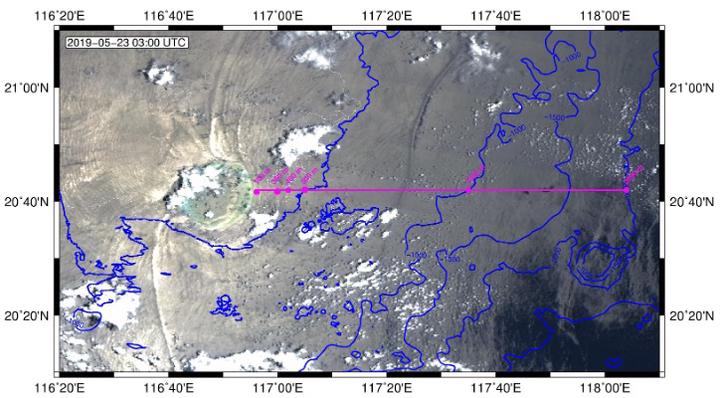Energetics of internal solitary waves interacting with a conical island
 MODIS imagine
MODIS imagineSimilar to surface water waves, internal waves are oscillatory movements of the interfaces between fluid layers with varying densities. Internal solitary waves (ISWs), or large-amplitude nonlinear internal waves, are akin to surface waves on beaches—typically hump-shaped and traveling faster than linear waves, while maintaining their shape over distances of thousands of kilometers. ISWs steepen and break in shallow coastal areas, playing a crucial role in ocean mixing and mass transport processes. However, their interactions with three-dimensional topography are less well understood. In this study, I use numerical models to investigate how and where ISW energy is transferred and ultimately dissipates through turbulent mixing around a conical island, representative of Dongsha Atoll in the South China Sea. In particular, I focus on the energy transfer between baroclinic and barotropic energy, associated with wave shoaling and breaking processes over three-dimensional topography.
